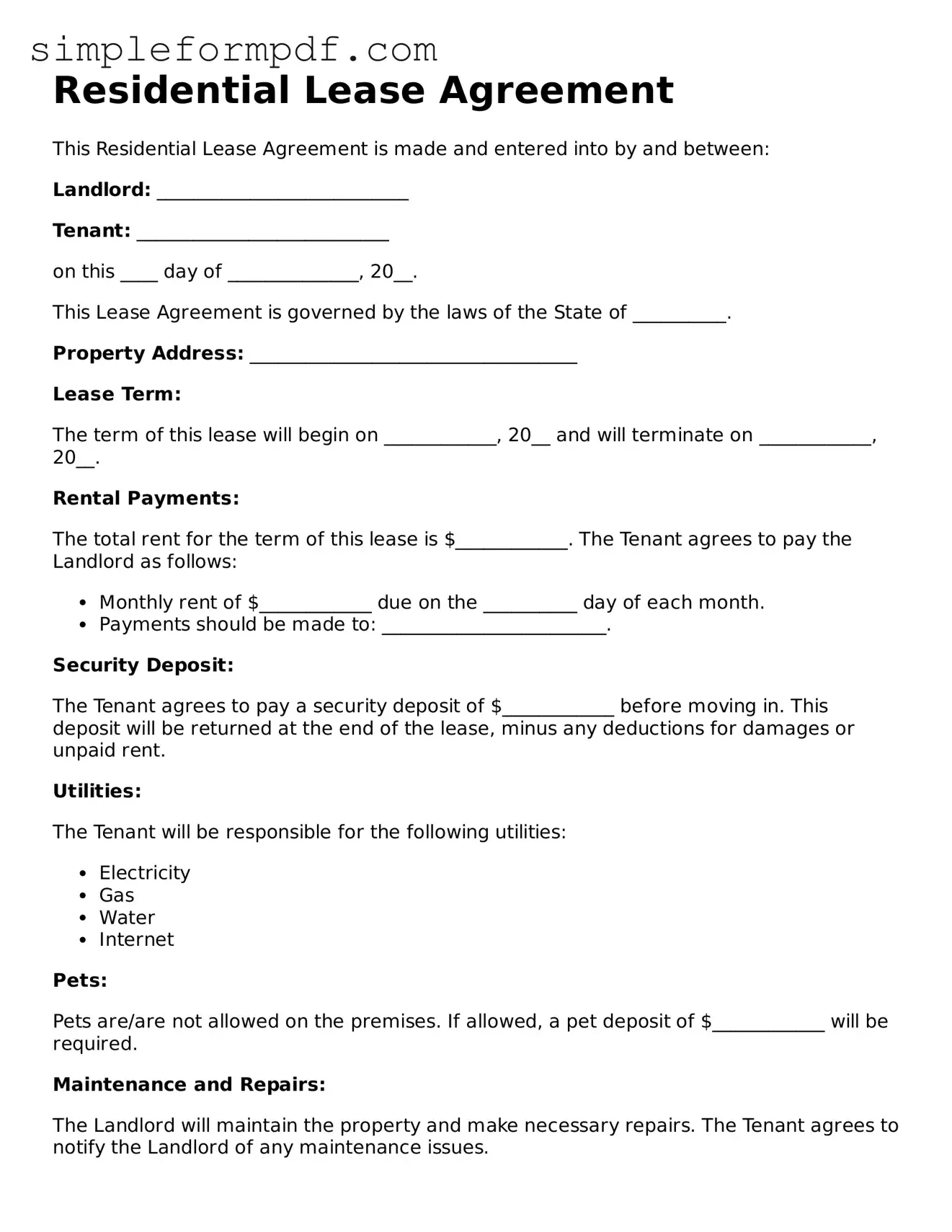Residential Lease Agreement
This Residential Lease Agreement is made and entered into by and between:
Landlord: ___________________________
Tenant: ___________________________
on this ____ day of ______________, 20__.
This Lease Agreement is governed by the laws of the State of __________.
Property Address: ___________________________________
Lease Term:
The term of this lease will begin on ____________, 20__ and will terminate on ____________, 20__.
Rental Payments:
The total rent for the term of this lease is $____________. The Tenant agrees to pay the Landlord as follows:
- Monthly rent of $____________ due on the __________ day of each month.
- Payments should be made to: ________________________.
Security Deposit:
The Tenant agrees to pay a security deposit of $____________ before moving in. This deposit will be returned at the end of the lease, minus any deductions for damages or unpaid rent.
Utilities:
The Tenant will be responsible for the following utilities:
- Electricity
- Gas
- Water
- Internet
Pets:
Pets are/are not allowed on the premises. If allowed, a pet deposit of $____________ will be required.
Maintenance and Repairs:
The Landlord will maintain the property and make necessary repairs. The Tenant agrees to notify the Landlord of any maintenance issues.
Termination:
Either party may terminate this agreement with a written notice of _____ days prior to the desired termination date.
Governing Law:
This agreement shall be governed in accordance with the laws of the State of __________.
By signing below, the parties agree to all terms and conditions stated herein.
Landlord Signature: _________________________ Date: ___________
Tenant Signature: _________________________ Date: ___________
